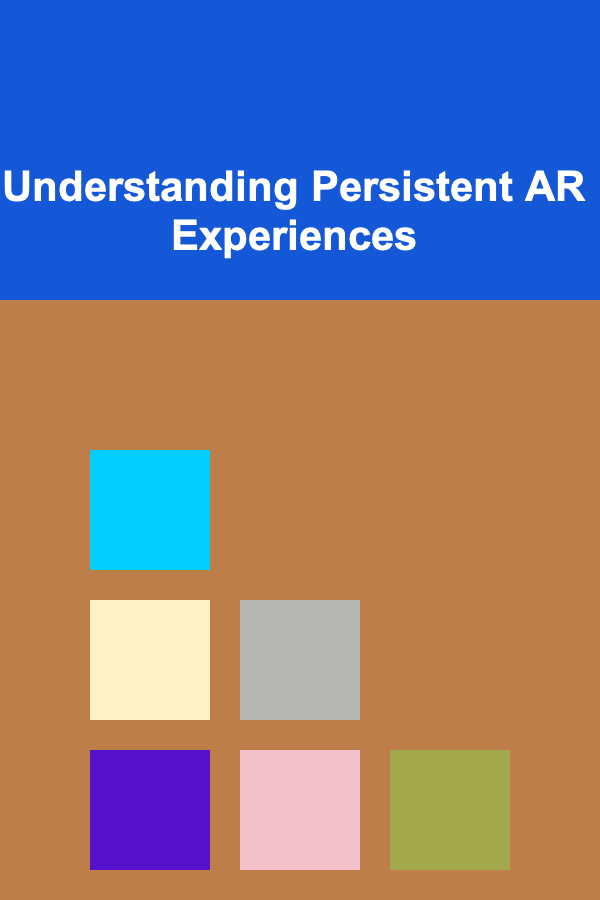
How to Read Tarot for Relationship Questions
ebook include PDF & Audio bundle (Micro Guide)
$12.99$9.99
Limited Time Offer! Order within the next:
Not available at this time

Tarot cards have been used for centuries as a tool for divination and self-reflection. They offer profound insights into the inner workings of one's life, helping individuals gain clarity on various aspects of their existence, including love and relationships. When it comes to relationship questions, the Tarot can be an invaluable resource, offering guidance and revealing underlying patterns that influence love life, compatibility, and emotional connections.
Reading Tarot for relationship questions involves more than just interpreting individual cards. It's about creating a narrative that brings together the cards' symbolism and energy, offering practical advice, emotional clarity, and sometimes a bit of foresight about how to approach or improve relationships.
In this article, we will explore how to effectively use Tarot cards for relationship readings. Whether you're seeking answers about love, your partner, or the dynamics in a romantic situation, Tarot can shed light on emotional complexities, decision-making, and potential outcomes.
Understanding the Tarot Deck
Before diving into relationship questions, it's essential to have a solid understanding of the Tarot deck itself. A traditional Tarot deck consists of 78 cards divided into two main sections: the Major Arcana and the Minor Arcana.
- Major Arcana (22 cards): These cards represent major life events, deep lessons, and significant turning points. They reflect universal energies and are often used to answer profound questions about the self and one's spiritual path.
- Minor Arcana (56 cards): These cards focus on everyday situations, relationships, and emotions. The Minor Arcana is divided into four suits: Cups (emotions and relationships), Swords (thoughts and conflict), Pentacles (material aspects and stability), and Wands (action and creativity). For relationship readings, the Cups suit, which represents emotions and love, is of particular importance.
Tarot and Relationships
In relationship readings, the cards provide guidance not only on the dynamics between you and your partner but also on how your inner emotions, desires, and fears influence the relationship. Relationships, whether romantic, familial, or platonic, reflect both external and internal factors, and Tarot helps illuminate these.
Setting the Intention for Your Relationship Reading
Before you begin your Tarot reading, it's important to set a clear intention. This means focusing your energy on a specific question or issue you wish to explore in your relationship. Your question might be related to a current partner, a potential love interest, or perhaps guidance on how to improve your relationship. The more focused your question, the clearer the guidance you will receive from the cards.
Example Relationship Questions:
- "What can I do to improve my current relationship?"
- "What is my partner feeling about our relationship?"
- "Is this relationship going in the right direction?"
- "How can I attract a healthier relationship into my life?"
When asking about relationships, it's vital to avoid overly broad or overly specific questions. For instance, asking "Will I get married?" may be too focused on a specific outcome, whereas a question like "What should I know about my love life right now?" allows for more flexibility and insightful responses.
Shuffling and Drawing the Cards
Once you've set your intention and formulated your question, the next step is to shuffle the Tarot deck. While shuffling, focus on your question and allow your energy to be absorbed into the cards. Some practitioners choose to let their intuition guide them during the shuffle, while others have a more structured approach, such as shuffling for a certain amount of time or until a specific card jumps out of the deck.
After shuffling, draw the cards. You can draw one card for simple questions, but for more complex relationship inquiries, a multi-card spread is typically used. A popular spread for relationship readings is the Three-Card Spread, which offers a clear and simple look at past, present, and future influences in a relationship.
Three-Card Spread for Relationship Readings:
- Card 1: The Past -- This card reveals the historical dynamics that have shaped the relationship up until now. It could show past emotions, events, or issues that have influenced the current situation.
- Card 2: The Present -- This card represents the current state of the relationship. It highlights the dynamics between you and your partner right now, including emotions, communication styles, and obstacles you may be facing.
- Card 3: The Future -- This card indicates the likely outcome or direction of the relationship, based on current energies and patterns. It may provide advice or guidance on how to proceed for a positive future.
Interpreting the Cards for Relationship Questions
Interpreting Tarot cards for relationship questions requires both knowledge of card meanings and an intuitive approach. Each card in the Tarot deck has a specific meaning, but it's essential to understand that these meanings shift depending on the question being asked and the surrounding cards. Below, we will explore how to interpret various cards when it comes to love and relationships.
The Major Arcana and Relationship Questions
Several Major Arcana cards are particularly relevant in the context of relationships. Below are a few examples:
- The Lovers: This is the quintessential card of romantic relationships. It represents deep love, partnerships, and the choices that come with love. In a relationship reading, it may indicate harmony, commitment, and mutual respect.
- The Empress: This card signifies fertility, nurturing, and abundance. It may indicate a relationship that is growing and flourishing, or it could highlight the need for emotional nurturing and care within a partnership.
- The Chariot: This card represents determination, control, and the ability to overcome obstacles. In relationship readings, it can indicate a relationship that requires effort and resilience, or it may suggest that a partner is taking control of the situation.
- Death: While this card may seem ominous, it's often a symbol of transformation, rebirth, and letting go of old patterns. In a relationship context, it may suggest the end of a cycle and the beginning of a new phase, whether that's a breakup or a deep transformation within the relationship.
The Minor Arcana and Relationship Questions
The Minor Arcana provides more nuanced details in relationship readings, particularly through the four suits:
-
Cups: The suit of emotions, feelings, and relationships. Cups cards are particularly significant when it comes to questions about love and emotions. For example:
- Ace of Cups: Represents the beginning of a new emotional phase, often signifying new love or emotional renewal.
- Two of Cups: This card represents mutual attraction, partnership, and the coming together of two people. It's one of the most positive cards for relationships.
- Five of Cups: Often indicates disappointment or regret, especially in love. It may point to focusing on past emotional wounds rather than looking forward to new opportunities.
-
Swords: The suit of the mind, communication, and conflict. Swords cards can indicate challenges or misunderstandings in a relationship, as they represent mental struggles and tensions.
- Three of Swords: A card that often signals heartbreak, betrayal, or emotional pain.
- Ace of Swords: Represents clarity and truth, and it could indicate that open communication is needed in the relationship.
-
Wands: The suit of action, passion, and energy. Wands cards in relationship readings may highlight the passion, creativity, or conflicts that are present in a partnership.
- Two of Wands: This card suggests a crossroads in a relationship, where one must make a decision about the future of the partnership.
- Ten of Wands: Represents burdens, stress, or feeling overwhelmed by responsibilities in a relationship.
-
Pentacles: The suit of material aspects, stability, and long-term goals. Pentacles can shed light on the more practical side of relationships, such as financial stability, security, and how well partners are grounded.
- Two of Pentacles: Indicates balancing multiple aspects of life, which might involve juggling a relationship with work or family.
- Ten of Pentacles: Represents long-term stability and success, often suggesting that the relationship has the potential to be solid and enduring.
Paying Attention to Reversed Cards
Tarot cards can appear in an upright or reversed position, and this can significantly change their meaning. A reversed card generally indicates an energy that is blocked or delayed, or it can point to an internal or subconscious issue.
For example:
- The Lovers (reversed): This might suggest disharmony or a lack of alignment in the relationship. It could also indicate a need to make an important decision regarding commitment or values.
- The Empress (reversed): A reversed Empress can signify emotional neglect, dependency issues, or a relationship lacking nurturing energy.
While not every reading will involve reversed cards, when they do appear, it's important to interpret them with care, as they often reveal deeper or more complex issues in relationships.
Trusting Your Intuition
While the symbolism and traditional meanings of the cards are essential, Tarot readings are also an intuitive process. Trusting your gut feelings, impressions, and emotional responses to the cards is vital in providing a nuanced interpretation of the reading.
Sometimes, a card will trigger an intuitive thought or feeling that may not directly relate to the textbook interpretation but may be deeply relevant to the situation. Your intuition can offer invaluable insights that complement the logical meanings of the cards.
Delivering the Message
Once you've interpreted the cards, it's essential to present the reading in a compassionate and clear manner. Relationship questions often touch on sensitive issues, and it's crucial to approach the reading with empathy and care.
When interpreting a relationship reading for yourself or a client, be sure to:
- Offer clarity, not confusion: The goal of Tarot is to provide understanding, not to create more uncertainty.
- Be gentle with difficult messages: While the Tarot can reveal harsh truths, it should be done with kindness and tact.
- Offer solutions or advice: Where appropriate, guide the person toward actionable steps that they can take to improve their relationship.
Reflecting on the Message
After a Tarot reading, it's important to take time to reflect on the cards and their messages. Often, the insights gained from the cards take time to fully integrate, and further reflection may bring new understandings or ways of approaching the situation.
Tarot readings are not meant to provide definitive answers but rather to guide individuals toward self-awareness and empowerment. The cards offer a mirror to your inner world, revealing patterns and providing clarity so that you can make decisions that align with your highest good.
Conclusion
Tarot offers profound insights for those seeking answers about their relationships. By understanding the symbolism of the cards, setting clear intentions, and trusting your intuition, you can use Tarot to explore your love life, gain clarity on romantic dilemmas, and discover potential pathways for growth and healing.
Relationship questions are deeply personal, and Tarot readings should always be approached with respect, sensitivity, and an open mind. Whether you are reading for yourself or others, remember that the Tarot provides guidance, not absolute answers. It empowers you to navigate the complexities of love and relationships with wisdom and confidence.

How to Calculate Your Product Markup and Set Profitable Prices
Read More
How to Use Technology to Monitor and Reduce Noise Levels
Read More
Turning Hobbies into Careers: Exploring Passion Projects
Read More
How to Understand the Impact of Climate Change on Indigenous Communities
Read More
How To Boost Your Self-Confidence
Read More
Understanding Persistent AR Experiences
Read MoreOther Products

How to Calculate Your Product Markup and Set Profitable Prices
Read More
How to Use Technology to Monitor and Reduce Noise Levels
Read More
Turning Hobbies into Careers: Exploring Passion Projects
Read More
How to Understand the Impact of Climate Change on Indigenous Communities
Read More
How To Boost Your Self-Confidence
Read More